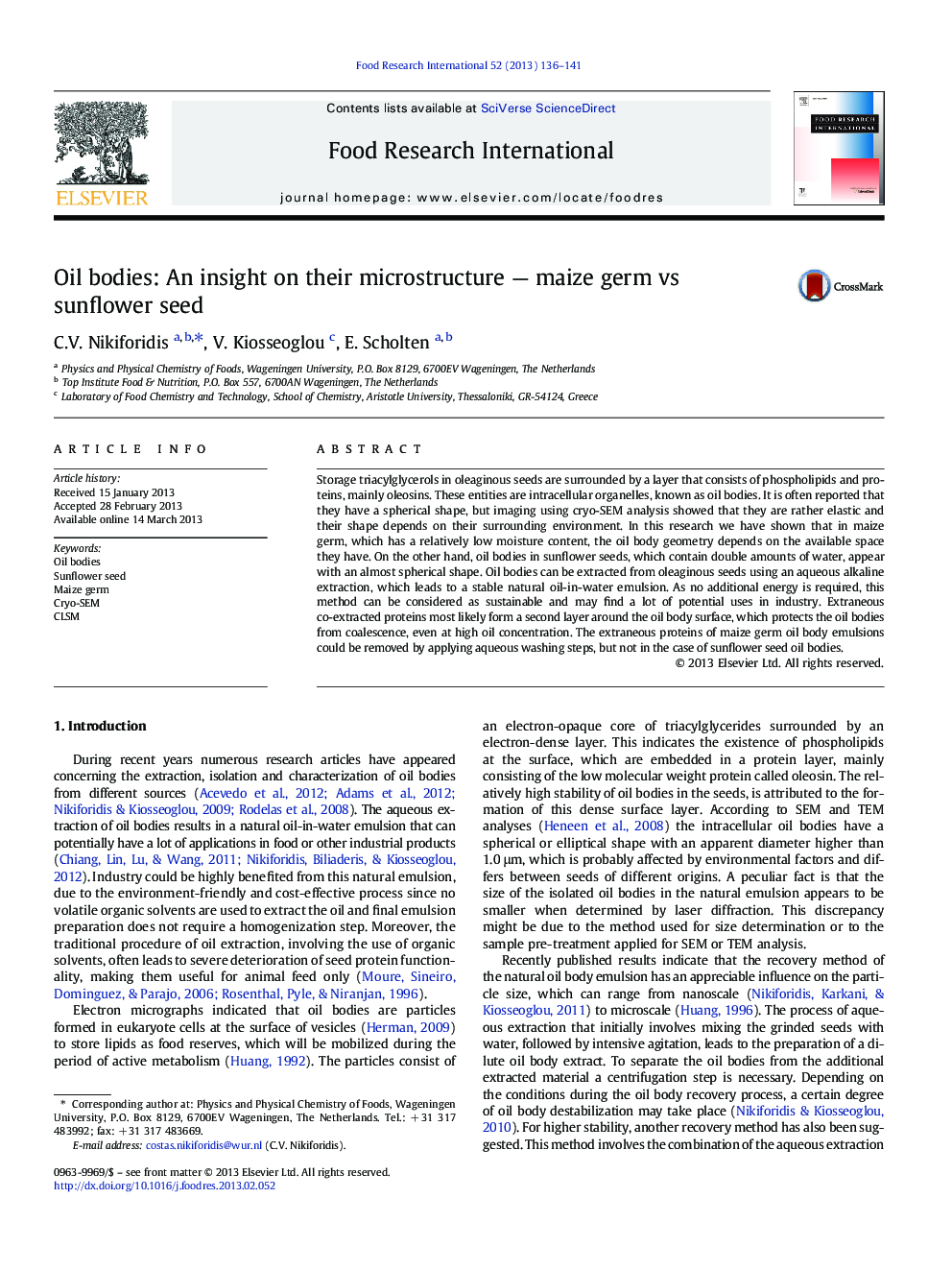| Article ID | Journal | Published Year | Pages | File Type |
|---|---|---|---|---|
| 6398192 | Food Research International | 2013 | 6 Pages |
Abstract
Storage triacylglycerols in oleaginous seeds are surrounded by a layer that consists of phospholipids and proteins, mainly oleosins. These entities are intracellular organelles, known as oil bodies. It is often reported that they have a spherical shape, but imaging using cryo-SEM analysis showed that they are rather elastic and their shape depends on their surrounding environment. In this research we have shown that in maize germ, which has a relatively low moisture content, the oil body geometry depends on the available space they have. On the other hand, oil bodies in sunflower seeds, which contain double amounts of water, appear with an almost spherical shape. Oil bodies can be extracted from oleaginous seeds using an aqueous alkaline extraction, which leads to a stable natural oil-in-water emulsion. As no additional energy is required, this method can be considered as sustainable and may find a lot of potential uses in industry. Extraneous co-extracted proteins most likely form a second layer around the oil body surface, which protects the oil bodies from coalescence, even at high oil concentration. The extraneous proteins of maize germ oil body emulsions could be removed by applying aqueous washing steps, but not in the case of sunflower seed oil bodies.
Related Topics
Life Sciences
Agricultural and Biological Sciences
Food Science
Authors
C.V. Nikiforidis, V. Kiosseoglou, E. Scholten,
